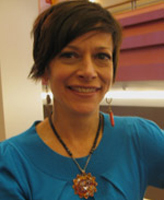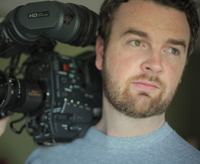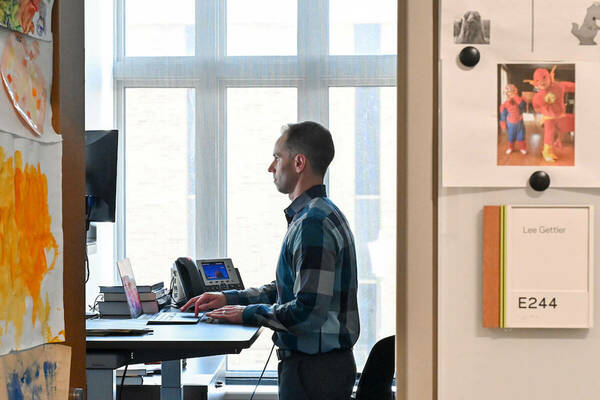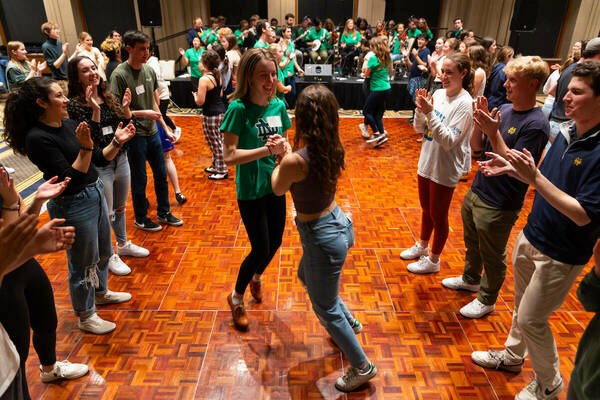
Danielle Beverly, a visiting assistant professor of filmmaking at Notre Dame, is headed to the Sundance Film Festival next week for the world premiere of the documentary Rebirth.
Beverly, who began teaching in the University’s Department of Film, Television, and Theatre this fall, spent the last nine years working as the movie’s field producer.
A Profound Journey
Directed by Jim Whitaker, Rebirth chronicles the lives of five New Yorkers in the years after the terrorist attacks of September 11, 2001, interspersed with footage from 14 time-lapse cameras trained on the site where World Trade Center once stood.
The cameras—which have been filming around the clock since 2002—were Whitaker’s idea, Beverly says. “He also conceptualized the idea of a human time lapse, which is paralleling the rebuild of ground zero by following the lives of several people who experienced loss as a result of that attack,” she says.
Beverly says she was drawn to the project by Whitaker’s vision and the opportunity to track the healing of a small group of people for nearly a decade. “I knew it would be a profound journey to witness and for the people who were experiencing it on camera,” she says.
Remarkable People
One of Beverly’s key roles as field producer was finding and building trust with the people who became the subjects of the film. These include a student who lost his mother, a widow of a first responder, a survivor from one of the floors above the impact zone, a man who oversees ground zero construction, and a firefighter who lost his closest friends.

“If you make documentary film, you don’t have a film without the people,” she says. “It takes their bravery to make a film.”
As director, Whitaker conducted extensive interviews with the subjects each year on the anniversary of the attacks. In between his taped interviews, Beverly served as point person for each subject, tracking the unfolding events of their lives and making sure camera crews captured the footage needed to illustrate key moments through each year.
“They were like family members, in a way, for eight years,” she says. “We came to weddings, we came to family events, we were inside peoples’ homes at some of the most intimate moments of their story, and that is to their credit. They are remarkable people.”
Gaining an Audience
Rebirth is one of just eight films Sundance selected for Documentary Premieres, which is a new section in the 2011 film festival that, that according to the Sundance Institute’s website, furthers its “commitment to this important form of storytelling by showcasing films on big subjects and new works by master filmmakers.”
The opportunity for exposure at such a prestigious independent film festival could help the Rebirth team find a distributor and reach its ultimate goal of endowing a Project Rebirth Center for victims of and first responders to other events of traumatic loss, Beverly says.
“It is very much in congruence with what Notre Dame is about, which is our mission of service,” she says. “It feels wonderful to be here right now when the film is coming out.”

Beverly—who is also nearing completion on a three-year documentary she shot, produced, and directed in Georgia—won’t be the only Notre Dame representative at Sundance this year. Peter D. Richardson, a 2002 alumnus of the Department of Film, Television, and Theatre, directed How to Die in Oregon—one of 16 movies chosen out of 841 submissions in Sundance’s documentary competition category.
Oregon became the first U.S. state to legalize physician-assisted suicide in 1994. According to a synopsis on the Sundance website, the film “gently enters the lives of the terminally ill as they consider whether—and when—to end their lives by lethal overdose. Richardson examines both sides of this complex, emotionally charged issue.”
Learn More >
Peter D. Richardson photo by Hunter Richards. Rebirth photo by Tom Lappin.


